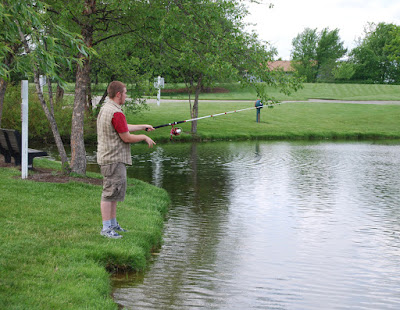If you want to experience a successful and exciting fishing trip, you don’t have to go somewhere have large bodies of water. There is a great variety of underwater life swimming around in your local pond! Sunfish, Bass, Crappie, and Catfish are just a few of the commonly found fish residing in your local fishing hole. The same as lake fishing, pond fishing is also a popular style of freshwater fishing, and there are many skills and be applied to it. Today, we will have a brief introduction about pond fishing and its skills.
Pond fishing is the method of fishing in a body of water that has a photic zone throughout its entire width and length. We generally divide the ponds into 2 kinds: the privately owned and the publicly owned. So, before you go fishing, please make sure that the owners allow you to fish when the ponds are private. And when the ponds are public, you should follow creel limits set by local or state agencies. Then, let’s talk about the fishing skills.
The fishing tackles
The fishing rod: As we all know, ponds come in all sizes but are generally small bodies of water, so you’d better use a fishing rod which is not longer than 6 feet. And the same time, you can choose a fast action, medium-light rod with a spinning reel, it will help you catch some small in the ponds.
The baits: When fishing in the ponds, we usually suggest you to use the live baits, especially the worms because they are attractive for fish in the ponds. If you want to use the artificial fishing lures, you can use the life-like miniature crickets, crawfish and minnows or plastic worms.
Fishing time
Most fish in the ponds have siestas, so it is hard to catch any fish during the heat of the afternoon. The early morning or evening is usually the best time for pond fishing. Only when you choose an appropriate time, you are probably to get the result you want.
Fish in the bottom of water
Because ponds are generally shallow, the fish will often locate in the deepest water as a safe haven where they spend the majority of their time. If there is any structure in a pond, it will attract fish. Creek channels, road beds, weeds, grass, brush, rocks or timber are prime places to find fish in a pond.
Use Temperature to Your Advantage
Fish like a specific type of water temperature because of the amount of oxygen in it, not to mention it’s what their body can tolerate. Fountains, streams and springs feeding into a pond can provide adjustable water temperatures that might be more appealing to specific fish.
Stay Hidden and Out of Sight
If you can see the fish then they can see you! In small bodies of water like a pond it’s not uncommon for fish to be able to see you. In fact, vibrations travel farther in small ponds and even if they can’t see you they can tell someone is near the edge of the water. Try to walk up quietly and stay out of sight, and use camouflage clothing that matches the local environment. You can find a wide selection of camouflage clothing on amazon for affordable prices.
Many people don’t like fishing in the ponds, because they think the ponds are small, and they can’t have a huge result. It is completely wrong, small ponds also have big fish as long as you use the right fishing skills. And if you are a beginner, the pond fishing is the most suitable style for you.











